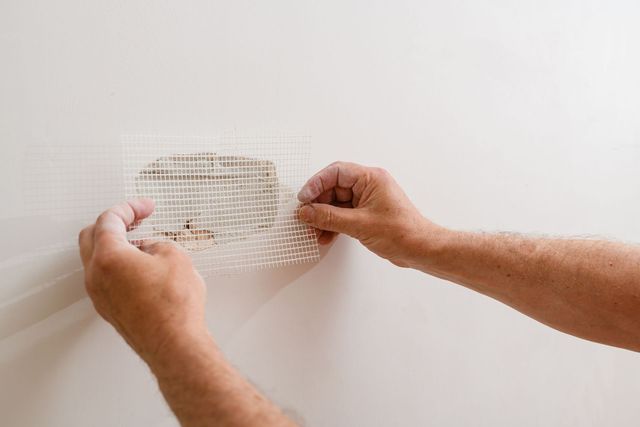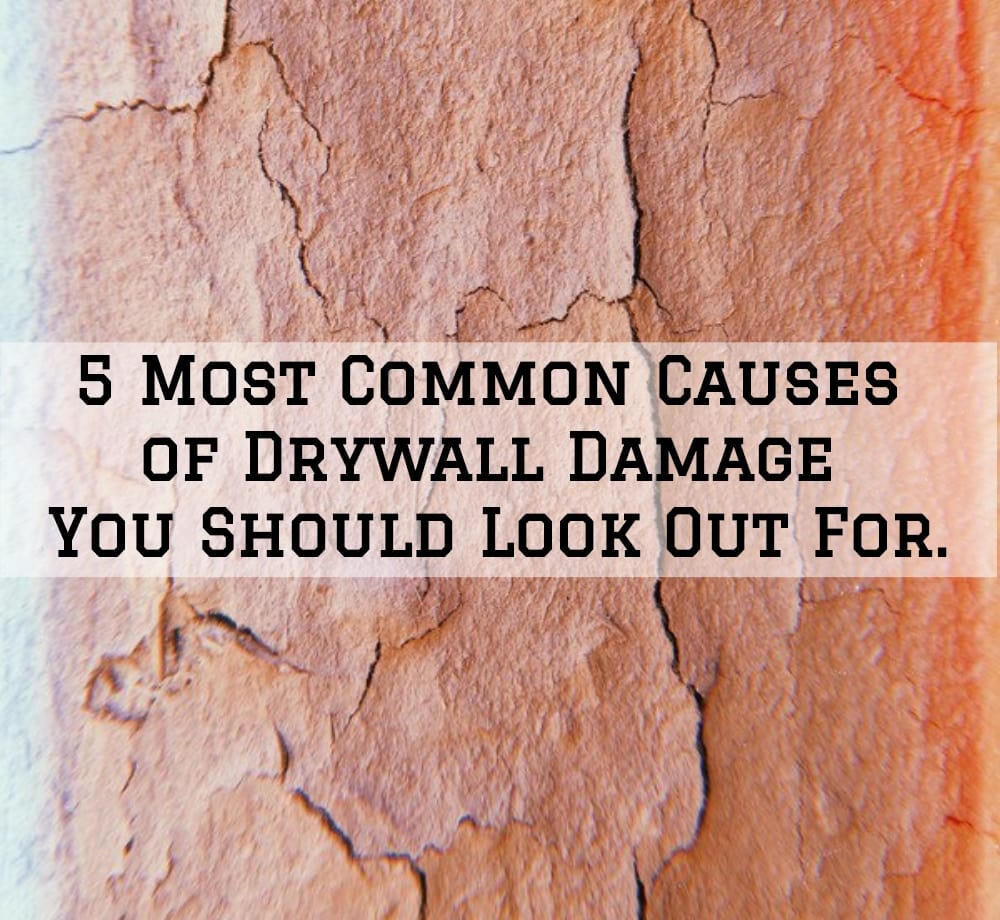Experience seamless results by working with dedicated drywall contractors and painters in your area.
Crucial Tips for Effective Drywall Repair Work and Setup Strategies
Efficient drywall repair work and installation needs a mindful method. Comprehending the types of drywall and having the right tools is important. Appropriate techniques and precise measurements can substantially affect the result. Numerous overlook vital steps like taping and fining sand, which can make or break the last appearance. As tasks advance, usual obstacles might emerge that call for interest. Discovering these pointers can cause a more refined and successful coating.
Comprehending Different Kinds of Drywall
Comprehending the different kinds of drywall is crucial for any successful fixing or setup task. Drywall, typically called plaster board, comes in numerous ranges customized for certain applications. Requirement drywall is the most extensively utilized kind, perfect for general interior walls and ceilings. Moisture-resistant drywall, often eco-friendly in color, is made for areas susceptible to moisture, such as shower rooms and kitchens. Fireproof drywall, typically tinted pink or purple, is crafted to withstand greater temperatures and is commonly used in garages or near heaters. Furthermore, soundproof drywall helps in reducing noise transmission, making it suitable for multi-family homes or videotaping studios. Specialty drywall, like concrete board, is utilized in damp locations like showers or tub surrounds. Understanding these kinds assists in choosing the appropriate material for every project, making sure durability and effectiveness in repairs or new installations.
Important Tools for Drywall Repair Work and Installation
Having the right devices is crucial for effective drywall repair and installation. A quality energy blade is essential for cutting drywall sheets exactly. A drywall T-square assists guarantee straight sides, while a taping blade is essential for using joint compound smoothly over joints. Furthermore, a drywall saw allows for eliminating damaged areas or fitting drywall around components.
For hanging drywall, a power drill with drywall screws is essential, as it enables protected and quick installation. A degree is likewise crucial to validate that the drywall is straight and effectively lined up. A fining sand block or pole sander is crucial for raveling joint substance once it has dried out. A measuring tape is important for accurate dimensions, stopping waste and making certain a correct fit. Furnished with these devices, individuals can tackle drywall jobs properly, bring about professional-looking outcomes.
Step-by-Step Guide to Repairing Holes and Cracks
When dealing with openings and fractures in drywall, having the right devices and materials is vital for an effective repair. This guide details the essential products and offers a clear, detailed procedure to effectively recover the surface. Recognizing these components will certainly aid guarantee a smooth coating and durable outcomes.
Devices and Products Needed
A well-equipped toolkit is crucial for reliable drywall repair work and installation. Trick tools consist of an energy knife for reducing drywall, a tape procedure to ensure precise sizing, and a drywall saw for larger openings. A putty knife is crucial for applying joint substance smoothly, while a fining sand block or post sander helps attain a seamless surface. For patching, a roll of fiberglass fit together tape or paper tape is necessary to reinforce joints. Additionally, a drill and screws are required for protecting new drywall items. Crucial materials are composed of joint compound, guide, and paint to complete the repair work. Having these devices and materials accessible assures a smoother, much more reliable repair service process, producing professional-looking results.
Fixing Refine Actions
Fixing openings and cracks in drywall requires a systematic technique to assure a smooth surface. The area surrounding the damages must be cleaned up thoroughly to eliminate dust and particles. Next, for small fractures, a putty knife is used to apply a joint substance equally over the location. For larger holes, a spot is required; the harmed section is cut out, and a brand-new item of drywall is suited location, safeguarded with screws. When the patch is in position, joint substance is put on mix the sides. After drying, sanding the location smooth is vital. The fixed surface should be primed and painted to match the surrounding wall, making certain an unnoticeable repair work.
Techniques for Setting Up Drywall Panels
Setting up drywall panels needs mindful preparation and specific execution to assure a smooth and professional surface. Initially, it is necessary to determine the wall area accurately and cut the panels to fit, ensuring that they align with the studs. Positioning the panels flat is normally recommended, as this can boost the structural stability my explanation and reduce the number of joints.
Utilizing drywall screws, installers must protect the panels every 16 inches along the studs, making sure a company hold. It is vital to avoid overdriving the screws, which can harm the paper surface area. For edges and corners, using an energy blade permits tidy cuts and a snug fit.

Finishing Touches: Taping, Mudding, and Fining sand
Once the drywall panels are firmly in area, the next vital action entails the complements of taping, mudding, and sanding. Taping is necessary for developing a smooth shift in between panels and hiding joints. A quality drywall tape, either paper or fiberglass fit together, should be applied over the seams, ensuring it adheres properly to the mud that will certainly be used following.
Mudding, or applying joint compound, follows the taping process. This substance loads voids and smooths out the surface. An initial layer should be applied kindly, feathering the sides to mix with the drywall. After the initial coat dries out, succeeding layers may be required for a remarkable coating.
Finally, sanding is required to attain a smooth surface. A fine-grit sandpaper needs to click this site be made use of to carefully ravel any blemishes. Care needs to be taken to stay clear of over-sanding, which can harm the drywall - Interior Painting. Appropriately implemented, these completing touches develop a specialist look all set for painting
Tips for Keeping Your Drywall After Installment
Maintaining drywall after installment is vital to preserving its look and architectural integrity. Regular cleaning is essential; dirt and dust can accumulate, so gentle wiping with a wet fabric is advised. Homeowners must also examine for any type of indications of dampness or mold and mildew, especially in high-humidity areas like shower rooms and cooking areas. If any damage takes place, it is very important to address it immediately to avoid further issues.
Utilizing furnishings pads can assist avoid scrapes or damages from heavy items. In addition, painting the drywall with a top notch, washable paint provides an added layer of defense and makes future cleaning easier. Prevent making use of unpleasant cleansers or tools, as these can damage the surface area. Maintaining a steady indoor climate with ideal moisture levels will certainly assist prevent fracturing or deforming over time. By following these suggestions, you can look here one can guarantee that drywall remains in outstanding condition for years ahead.
Often Asked Questions
How Long Does Drywall Take to Completely Dry After Installment?

Can I Mount Drywall Over Existing Drywall?
Yes, drywall can be set up over existing drywall, yet it is vital to assure the underlying surface area is safe and secure and appropriately prepared. This technique can boost insulation and decrease setup time, though it may add weight.
What Is the most effective Means to Soundproof Drywall?
The very best means to soundproof drywall entails making use of specialized soundproofing products, such as durable channels, acoustic caulk, and sound-dampening drywall. These techniques successfully reduce sound transmission in between areas, enhancing general acoustic performance in living spaces.
How Do I Pick the Right Drywall Density?
To choose the right drywall density, take into consideration the application and place. Standard property wall surfaces usually utilize 1/2 inch, while ceilings or specialized areas might require 5/8 inch for extra stamina and soundproofing capabilities.
Are There Eco-Friendly Drywall Options Available?
Yes, green drywall options are available. These include products made from recycled materials, gypsum boards with low volatile organic compounds (VOCs), and those using sustainable manufacturing processes, using environmentally-conscious choices for building and renovation tasks.
Having the right devices is crucial for efficient drywall repair service and installation. For hanging drywall, a power drill with drywall screws is essential, as it makes it possible for protected and fast installment. Key devices include an utility blade for reducing drywall, a tape procedure to guarantee accurate sizing, and a drywall saw for larger holes. Yes, drywall can be installed over existing drywall, however it is important to assure the underlying surface is secure and adequately prepared. The ideal means to soundproof drywall includes using specialized soundproofing products, such as durable networks, acoustic caulk, and sound-dampening drywall.